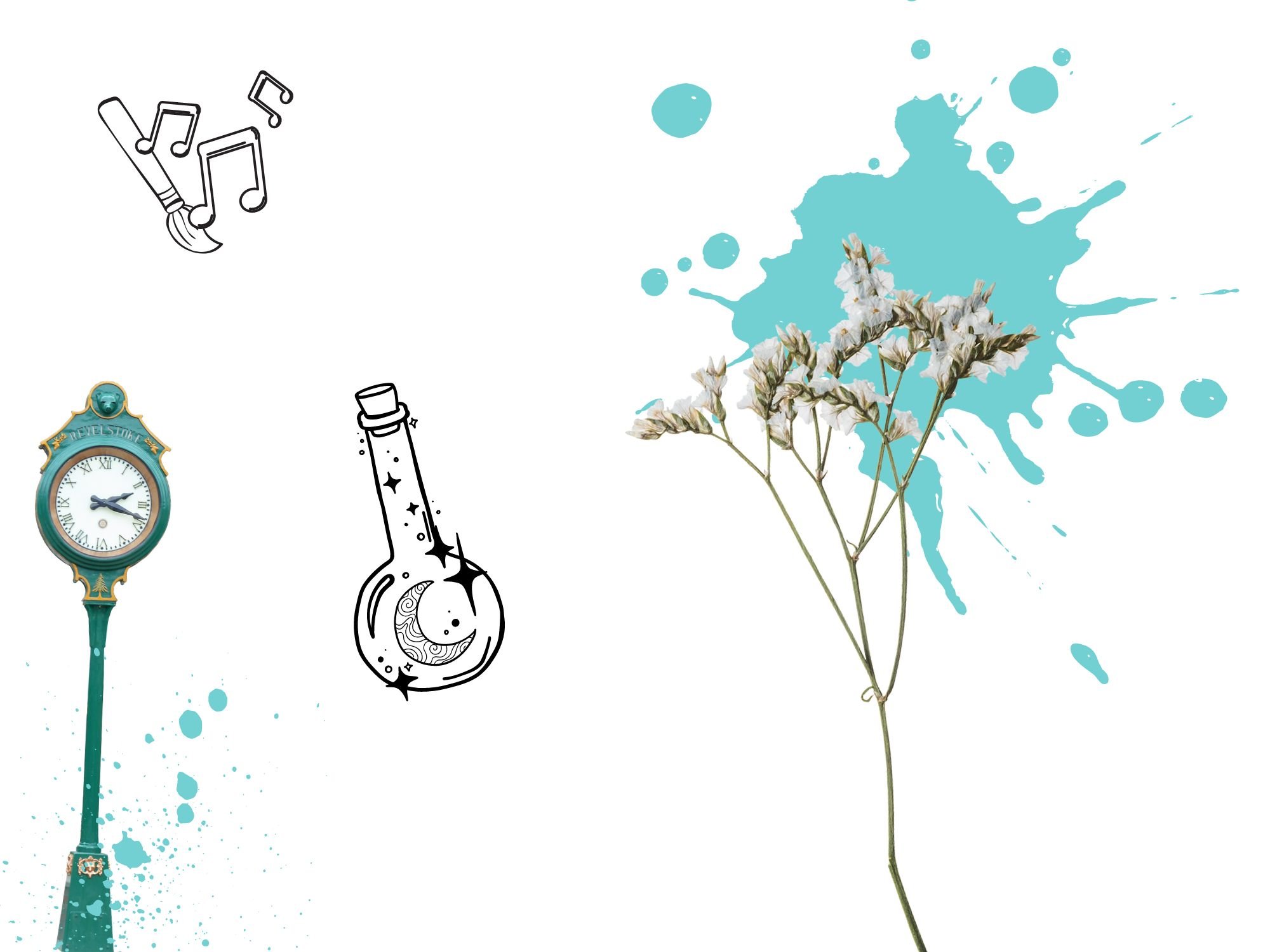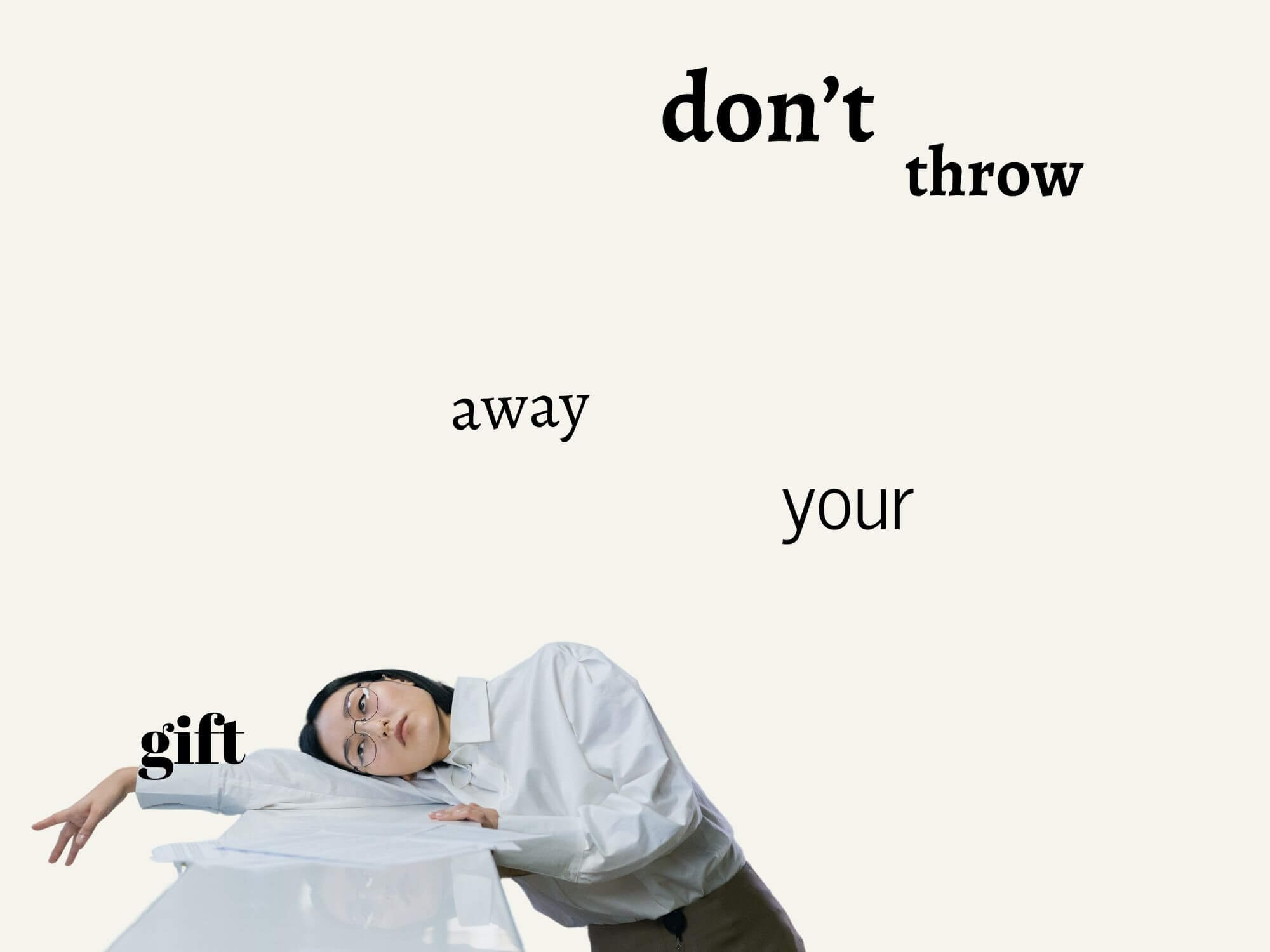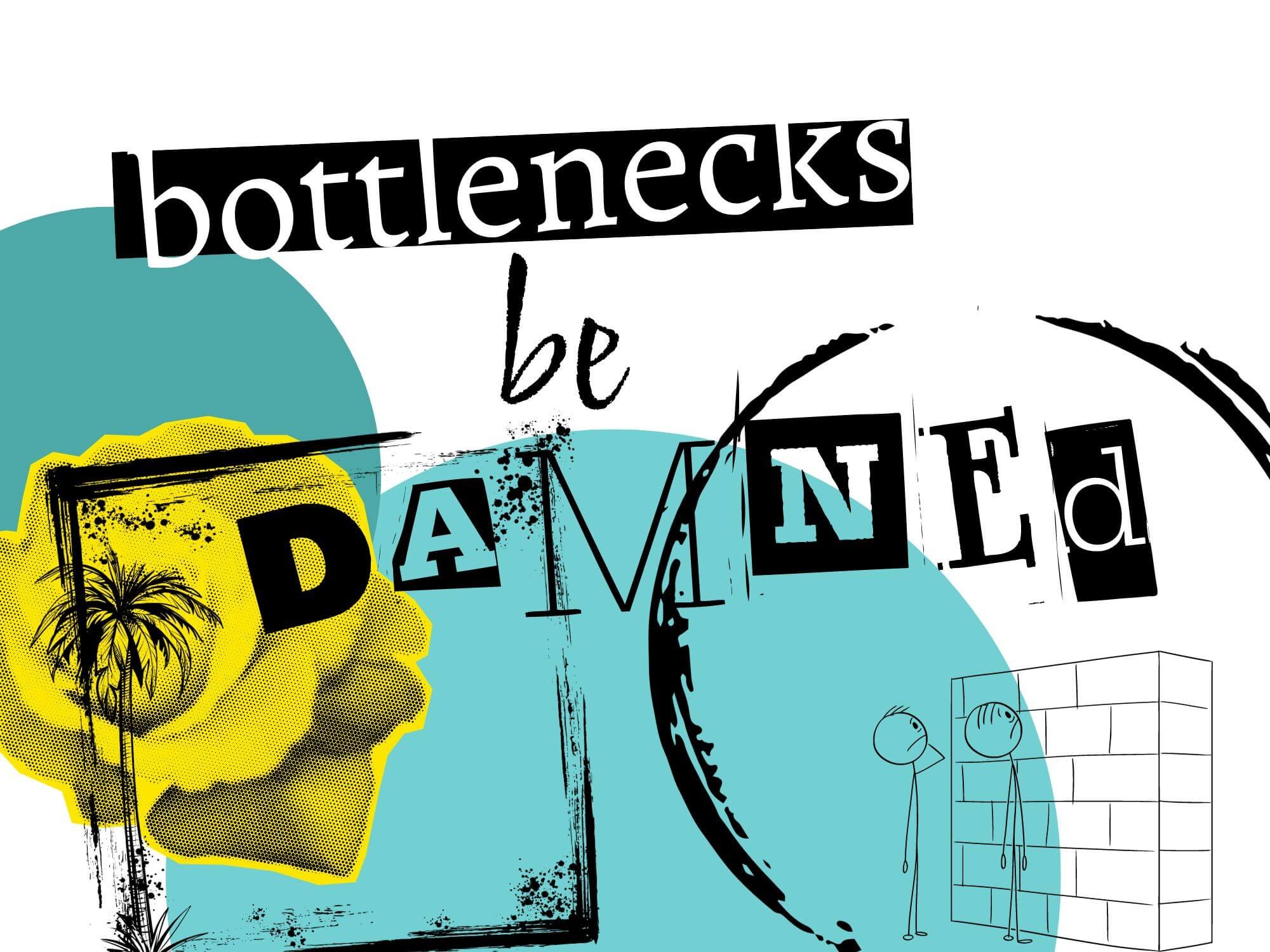Art Block, Be Gone (my top 10 artist block elixirs)
Hitting walls, and creative lulls. It’s a raw deal, but it’s all part of the process. So these are my top moves — my elixirs — for overcoming artist block.
This so-called art block can sort of feel like you’re trying to run in ankle-deep mud. So having a few tools to fall back on will go a long way.
But enough chit-chat.
Let’s get to it.
What Is Art Block? (meaning + examples)
First things first, definitions. So what is artist block?
Artist block (or art block) is the feeling of being stuck in some creative process or project, unable to move forward.
While it’s not as serious as a full-on creative rut (which tends to be longer-term and influences your habits and routines), it’s still frustrating. And it’s totally normal.
For better or for worse, it’s part of the human creative process. And that’s okay. Everything is in a state of flux — duality exists, yin and yang.
It’s actually this state of contrast that yields the most innovative things. Because without downs and points of reflection, creative lightbulbs and artistic high-points can’t exist.
So, with this mindset, let’s explore my top elixirs for speeding things up and shrinking these artistic blockades.
My 10 Art Block Elixirs
These are my top moves for getting out of creative quicksand.
Some may work better than others, depending on the day and your context. So try each one out (or mix and match them) to find your best solution.
1. Reverse Thinking
This is an awesome hack for getting over artistic blocks – reverse thinking.
Reverse thinking is a thought exercise, where you try to think of ideas for how to make a particular problem or question worse (rather than better).
For example, rather than trying to figure out ways to overcome art block, we can think of ways to prolong our creative quicksand and make it worse.
This can feel a bit strange, and counterintuitive, but it’s super powerful to find solutions and get clarity.
So try asking and answering these reverse thinking questions:
How could I create more art block?
How could I be less creative?
How could I make this art block last longer?
How can I reduce my artistic inspiration?
There’s a good chance that your answers will either give you fresh perspectives and insight for how to resolve your art block.
2. The ‘Future Me’ Thought Exercise
I love this one – it adds instant clarity and can make my next creative steps seem really obvious.
So the idea here is simple, just ask yourself this one question:
What would future me do?
Future me has all the answers. He’s much more savvy than I…
But I am him, and he is me. So let’s use this fact to our advantage.
Often, putting yourself in the shoes of your future self (or imagining what your idols would do) can give you some much needed insight and clarity.
So whenever I’m feeling creatively stuck, I vividly imagine myself in the future – my personality, surroundings, emotions, future skills and successes…
I then imagine how I would react and move forward.
Often, I can either find some new ideas or at the very least, some inspiration and motivation for simply taking action.
(because sometimes, all we need to do is take action – not wait around for creative inspiration to strike)
3. Make Stuff Visual
Making creative projects and pursuits visual is sort of like zooming out.
It adds clarity and a fresh perspective on things.
Making your stuff visual means turning your text, notes and ideas into images and scannable elements.
It’s easier to see patterns, gaps and the bigger picture this way.
I usually use a digital creative tool for visualizing my projects and processes. For example, …
These are both free to use, and they’re relatively simple to use.
But if you’re still wondering about visualizing techniques, I usually use one of three strategies:
A mind map is a diagram for visually representing tasks, concepts or projects and all of their component pieces
Visual brainstorming
Visual brainstorming is an ideation strategy that leverages imagery to better identify new ideas, gaps and unique connections between ideas
Reverse engineering is the process of breaking down some larger, more complex idea into its smaller component pieces, for clearer understanding
4. Have A System to Fall Back On
Here’s the thing, workflows work.
I don’t use them everyday, as things become sort of autopilot, habits develop and different goals are met.
But having a system, or workflow, to fall back on during creatively blah moments is incredibly helpful.
For example, I initially created a music workflow to better hone my skills, organize my tasks and track my progress.
But I realized quickly that my workflow was actually a system for getting things done when I didn’t know where to focus or I lacked any creative inspiration and motivation.
Here’s an example of a basic creative workflow for when you’re experiencing art block:
Choose a theme, style or project angle
This can be provide initial guardrails and focused direction
Think of some input and initial ideas
It’s important to not judge the creative quality here – anything goes
Think of many concepts and ideas – they could be old ideas, boring ones or completely uninspired – just get some stuff down
Playground – idea development phase
For this stage, the focus should be on fun, the creative process, intuition and creating many different drafts or potential paths forward (again, quantity not quality)
You may again borrow ideas from your previous projects or from other artists
The goal would be to develop some clarity and potential paths forward for each idea
Tease out the best ideas
Step away for long enough to forget about things, then come back with fresh eyes (*my next tip on finding new perspectives talks more about this)
Whatever idea sticks out and excites you most is the winner
Push forward
At this point, you should have some renewed inspiration to push past your art block
If not, rinse and repeat from step 3 above, but just for this single idea you decided on
Workflows and systems do work, if you give them a chance.
But long story short(er), it’s just nice to turn your creative process into a personalized formula.
5. Find New Perspective (step away)
Sometimes, we miss the creative forest for the trees. So let’s create some objectivity.
It’s easy to get in too deep when we’re working on a project.
This can sometimes lead to burnout, creative blocks and frustration for where to focus, what to do next and which options are best.
But there’s a relatively easy fix for resetting our perspectives and energy around a particular project.
Step away long enough to forget.
Stepping away to the point of forgetting the details and nuances of your project is like rebooting your creative router.
You’ll come back with some objectivity and a fresh perspective on things.
Often, you’ll realize what’s good, what’s not and what to do next.
I love doing this with my music ideas and projects.
Whenever I hit the brick wall with a song, I simply step away. Sometimes it’s just for a few hours – sometimes a whole month (or more).
But when I come back, I often recreate the initial excitement and creative energy of the project and have new ideas for moving forward.
6. Swap Environments
Let’s stack the cards in our favor.
This is a staple recommendation for boosting creativity, motivation and artistic energy.
There are three key places I like to stack the deck in my favor:
My inner circle
The people in my life – are they inspiring me artistically?
My outer circle
The content in my life – is it motivating me creatively?
My environment
My surroundings – is it supporting my creativity?
We can’t always change every aspect of our environment, but trying to manage even just a few aspects of the ideas above can go a long way in managing our artistic blocks.
So try a fresh environment, or renovating your current studio with fresh smells and sounds.
Or try networking with new people or finding a new space to create and think.
Try to stack the cards in your favor.
7. Stop Trying So Hard
I know, this is easier said than done.
But stop trying so hard.
Sometimes (for me) art block is the direct result of me trying way too hard to be perfect or just juggling too many projects and tasks at once.
Why do we put this pressure on ourselves?
Creative attention and energy can be finite, so this is definitely a move worth trying if you’re feeling stuck.
Here are some quick ways I like to stop trying so hard (and accomplish much more in doing so):
Reverse engineering your goals into smaller micro goals
Adjust your time horizons
Taking smaller action (for example, working for just 5 minutes)
Pretend it’s a joke
Do less (micro focus)
Take a break or work on something different
8. Use Limitations
Here’s a simple truth: limitations force us to be more creative.
So this is a great strategy for overcoming art block.
Limitations are restrictions we put on a creative project or idea. By imposing limits, we’re forced to think outside the box.
Sometimes, too many options can cause us to freeze with analysis paralysis. So removing our options nips this in the bud.
For example, if I’m feeling stuck with what type of song to write and what to write about, I can add restrictions.
I could write a song that only uses my acoustic guitar, a chorus that has only 5 words or less and is about travel in Japan.
This forces us to be creative and can really help for beating art block.
Here are some ways to use limitations:
Add some urgency with time limits
Limit the amount of materials you can use
Restrict the type of materials or medium you can work within
9. Be A Copycat
Sometimes, we tend to make unrealistic comparisons.
This can lead to things like creative imposter syndrome, a loss of motivation and artistic anxiety.
But let’s try to leverage things in a more practical way. Let’s mimic.
I’m not saying we should copy people and try to become someone else – of course not.
But when we’re in a creative slump, getting some outside inspiration from other creators and artists is incredibly helpful.
Often it sparks a fresh round of ideas.
For me, when I’m feeling musically tapped, I like to put on either my favorite artists or some new talent.
I like to actively listen for different production techniques, sound design and songwriting styles.
I often get inspired in one way or another.
Sometimes, that inspiration starts as me just copying some particular style or technique.
But eventually, I always end up putting my own spin on things – as artists, we can’t help it.
10. It’s Not Creative Time (so focus on skill building)
Sometimes, creativity stays MIA and art block just persists.
But we can still do something.
This could be a great opportunity for skill building and development and for learning new techniques.
After all, skill development can sometimes feel more technical and tedious than creative and fun.
So experiencing art block may be the perfect time to double down in these areas.
Once you finally do “recover” from your artistic woes, you’ll have some new techniques and skills to try out.
But something interesting often happens when you’re not trying to be creative. You end up being creative.
Oftentimes, creative mood, motivation and ideas come after taking action (not before).
So by not trying to overcome artistic blocks (by focusing on skill development), we may inadvertently overcome our creative blocks.
Bonus (use AI)
Like most, I’ve been having fun playing around with AI and learning what it can do for me.
One core realization is this: it’s been massively beneficial to my creativity and productivity.
Literally, it’s like a magician — and just like that, creative blocks be gone.
For example, let’s say I’m struggling with a song topic, I can simply ask ChatGPT for some ideas.
Or maybe I’m not sure how to structure my ideas into a cohesive blog post or video — I can just feed my ideas into an AI and tell it to give me 5 different variations.
Not all of the ideas will be good, but it gets the ball rolling on my ideation process and creativity.
So play around with AI (ChatGPT, Bard, Perplexity, etc.).
Learning how to use this new tool is a modern skill, which can serve as your own creative personal assistant.
Want More? Check Out These Sweet Reads!




